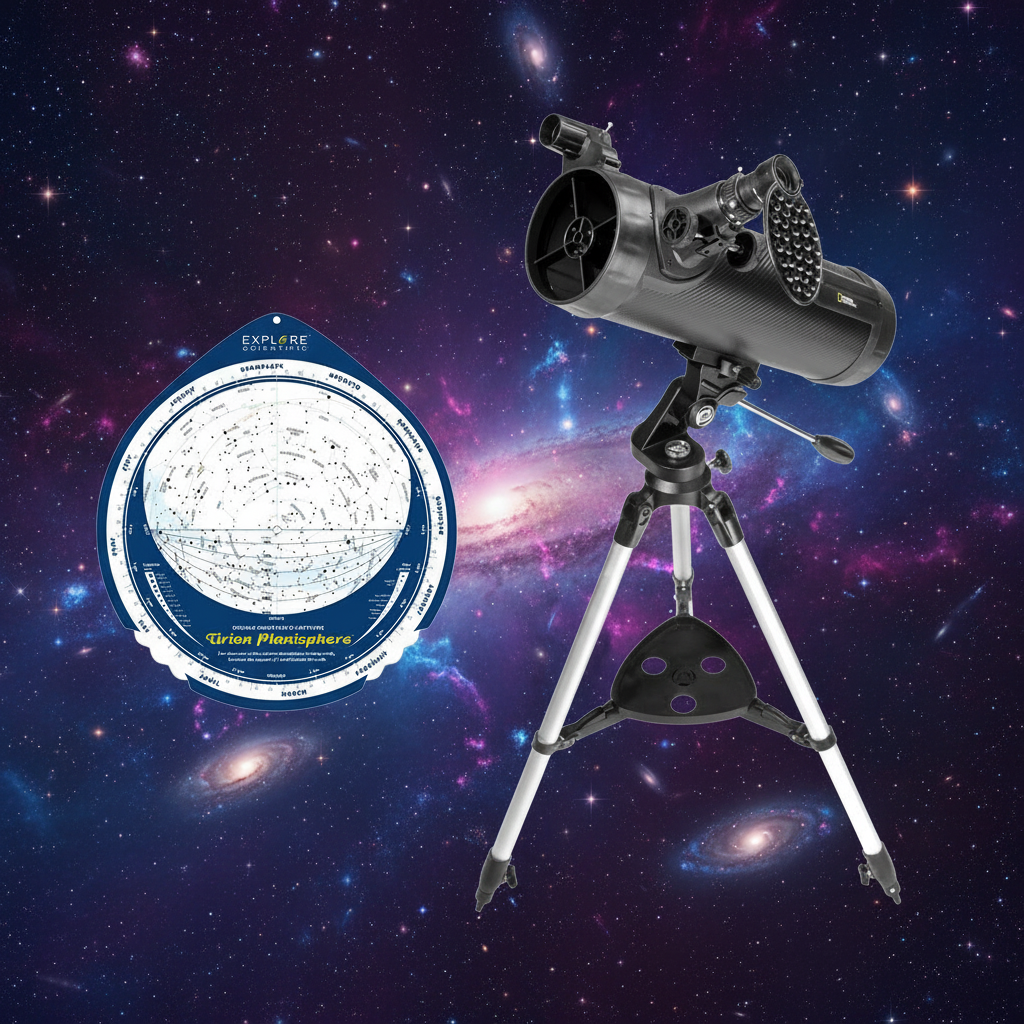Why is Everything Upside-Down in the Edu-Science AstroNova HD 1000?
(3)[E]
The Edu Science AstroNova HD 1000 is a Newtonian reflector telescope. Reflector telescopes had been around for a while before Newton made his design. The advantage was that mirrors produced better images than refractor optics at that time because they eliminated chromatic aberration. Astronomers at that time would look down the front opening of the telescope and see images of stars at the point of focus. The image of the stars would appear to float in the middle of the tube. But the problem with this "front view" reflector telescope is that the astronomer's head was blocking some of the light entering the telescope. Designed by Isaac Newton, the Newtonian has a small flat mirror that diverts the image 90 degrees from the light path. By adding a small flat mirror to redirect the light to the side of the tube solved the problem of a large obstruction that came from the astronomer's head in the "front view" type, allowing much more light to pass through the telescope. More light means more image brightness, and more brightness means more power to see distance.
But there is one effect that the Newtonian reflector telescope has that those new to the design are surprised by, and that is that Newtonian reflectors always show the images upside-down and backwards. Now this presents no problem when using the Newtonian reflector for what it was designed for; to look at the stars. But these telescopes can focus on objects on the ground, and those new to these telescopes may try to use them as a terrestrial spotting scope. However, with everything upside-down and backwards, the view is unsuitable for land viewing. You can learn more about the Newtonian Reflecting Telescope here:
http://en.wikipedia.org/wiki/Newtonian_telescope
If you need a telescope that can view stars and give a right side-up view of objects on the ground. Choose a refractor, such as the Edu-Science Astrolon HD 700.











